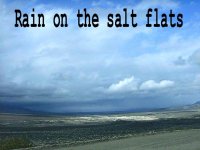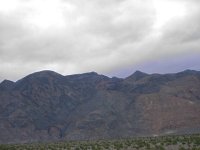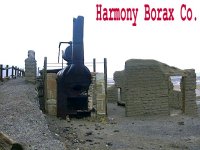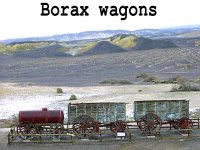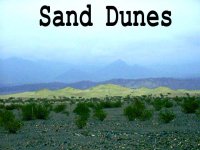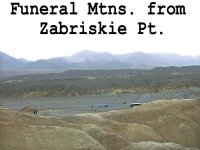This is, no doubt the harshest environment of any of the National Parks! In summer temperatures frequently rise above 120 degrees and sometimes exceed 130. Yet in the winter there is frequently snow on the mountains, and night temperatures fall near the freezing mark. Average temperatures range from an average high in July of 116.2 and an average low of 39.3 in January.
The altitude of the park ranges from 11049 ft. at Telescope Peak, in the Panamint Mountains., to a minus 280 ft. at Badwater. These mountains are some of the most rugged in the country. And the valley floor is slowly dropping lower and lower. The size of the park is 3,336,000 acres.
Rain is very rare, but there are a few springs that provide striking areas of green vegetation. When rain falls in the mountains it is usually in the form of a cloud burst, and it causes wild flash floods, but little else.
Since there is no outlet from the valley, the small lakes that form after it rains are dead, and some are not safe to drink. The water causes the minerals to leach out as the water evaporates on the valley floor. That is the reason that borax mining has been the most successful mineral ever mined here.
There are three RV camping areas in the valley. Furnace Creek has both a Natl. Park service camp with no hook-ups, and there is also a commercial campground with full hook-ups and rental rooms at Furnace Creek Ranch. The park visitor center is also there.
Stovepipe Wells also has a campground with hook-ups, but it is very stark.
Death Valley is an interesting place to visit, so allow yourself at least two days if you wish to see it all. Three days would probably be ample for most visitors to see all of the major attractions and also Scotty’s Castle. If desert hiking or off road exploring are of interest to you, you could well spend months there.








